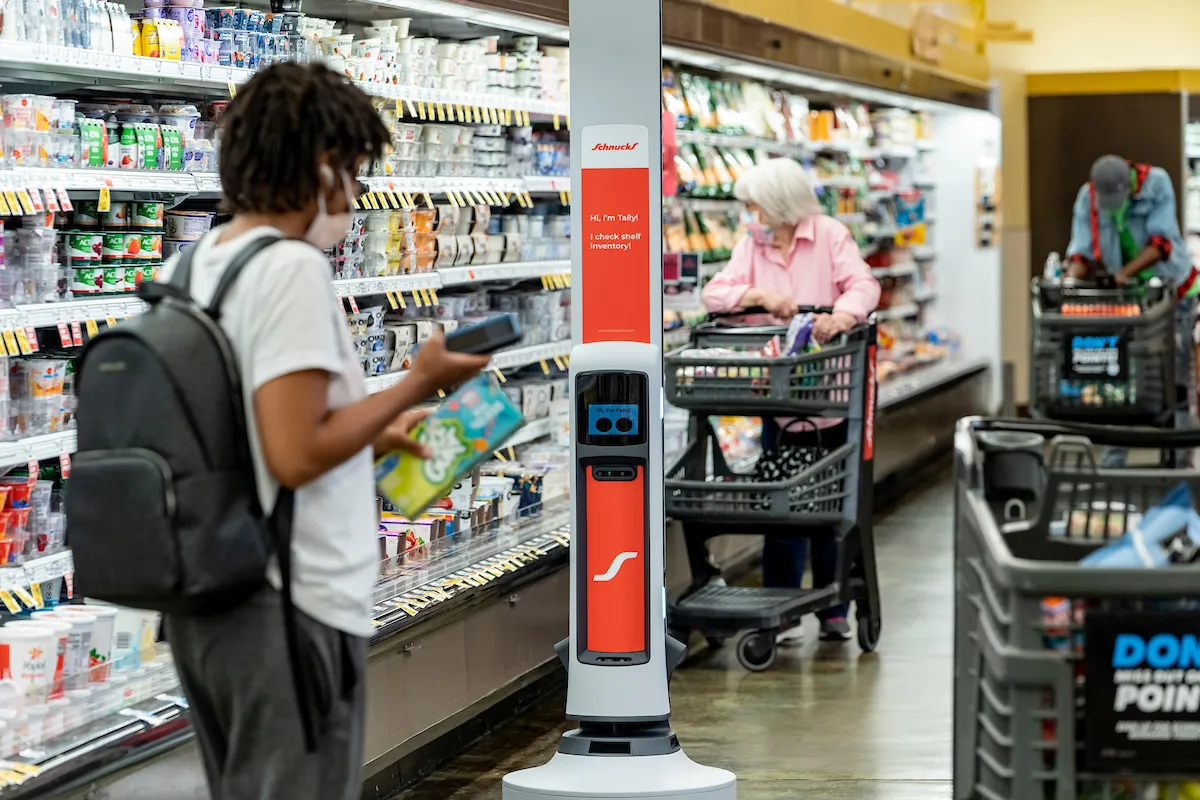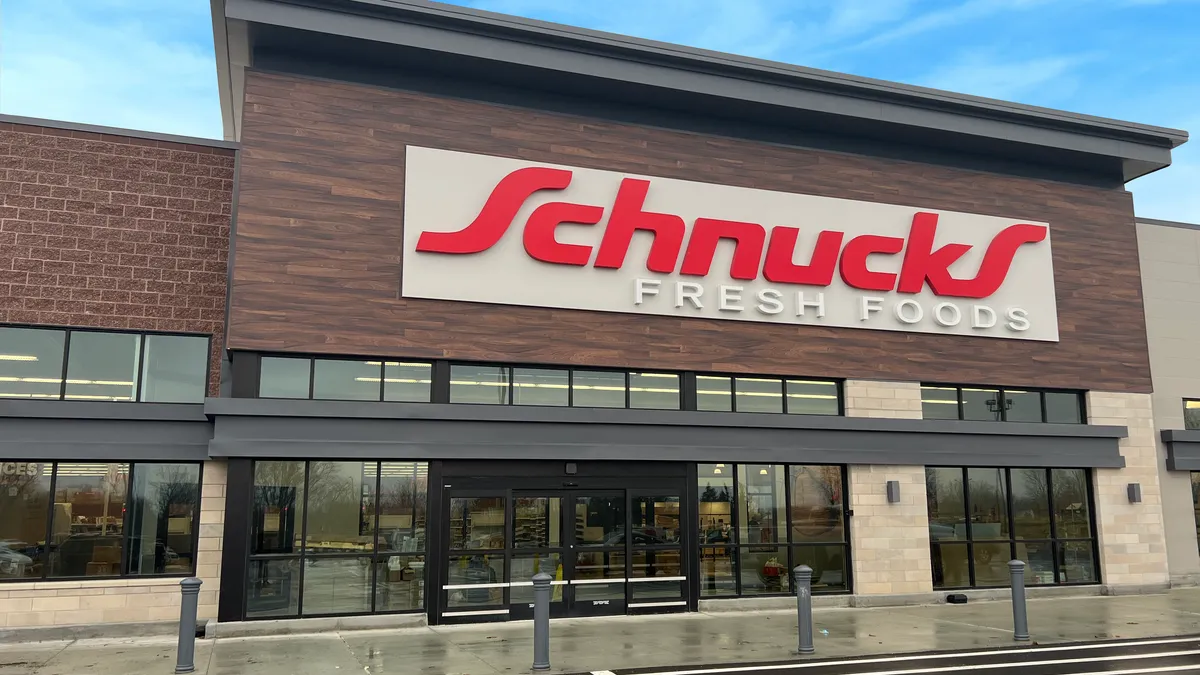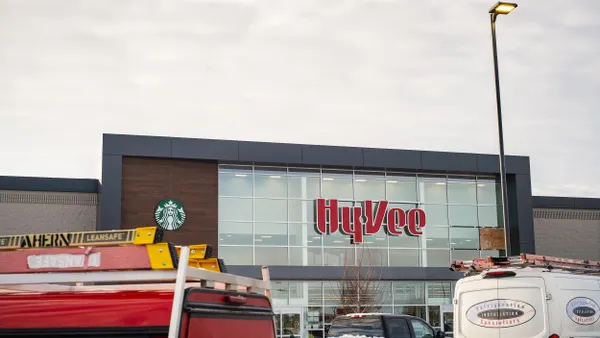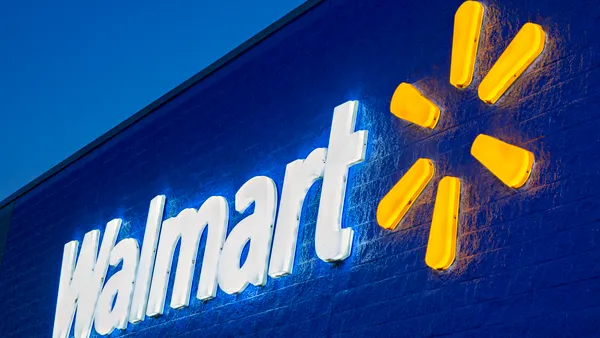Later this year, smart carts will be rolling into a few Schnucks Market locations for a pilot as the Midwestern chain’s latest move to build on technological investments and create synergies between its digital solutions.
Schnucks’ recent investments in technology solutions, such as electronic shelf labels (ESLs), are coming at a time when the grocery industry has been grappling with ongoing labor shortages. Technology has also gotten less expensive over time, lowering the cost barriers for grocers like Schnucks to implement new digital capabilities.
“You have fewer people working in the store so you need to optimize that labor to do things that really are focusing on the customer,” said Dave Steck, vice president of IT infrastructure and application development.
Schnucks replaced all of the copper infrastructure in its stores to private line fiber infrastructure, Steck said in a joint interview with Bob Hardester, the grocer’s senior vice president, chief information officer and chief supply chain officer. That change has helped the grocer better support digital innovations, such as ESLs, in part by boosting bandwidth, the executives said.
Steck and Hardester credit the work Schnucks has done to improve its technical and digital infrastructures, as well as data analytics capabilities, for laying a foundation for digital innovation that Schnucks can build upon over time without running into issues, such as network bandwidth.
The grocery company’s IT staff also takes about six days annually to spend time in stores to experience associates’ jobs and see first-hand how tech can elevate the customer and worker experience.

Tying tech together
Schnucks is no stranger to in-store digital innovation. Back in 2017, the grocery chain, which has more than 110 stores across five states, began testing aisle-roaming robots known as Tally from Simbe Robotics. Since then, Schnucks has expanded the deployment of Tally, which uses sensors to check price accuracy and inventory levels, to more stores, as well as add on more responsibilities for the robotic helpers.
When Schnucks announced Tally’s fleetwide expansion in 2021, the grocer noted at the time that it had also expanded their usage from just dry goods to also include fresh and refrigerated products.
The gradual enhancements and layering of solutions to ESLs with Tally fit into Schnucks’ broader mindset of how it turns to technology to benefit its broader omnichannel experience.
As a prime example, Schnucks is approaching ESLs as more than just the digitized version of paper tags. The grocer has a long list of capabilities ESLs can unlock, from providing more flexibility with markdowns, freeing the grocer from traditional ad cycles and offering shop-to-light and stock-to-light features for shoppers and workers, Steck and Hardester said.
Schnucks is in the process of a chainwide deployment of Hanshow’s digital tags, which is expected to be complete within two years. That expansion is also happening at a time when the costs associated with digital tags are coming down, Steck and Hardester noted.
While Schnucks is early in its “aggressive” ESL rollout, Hardester and Steck noted that already the grocer is seeing improvements in freeing up store associates for other tasks, like product rotation and stocking. Once the rollout reaches critical mass, the grocer will be able to tap into operational efficiencies like automating pricing, Hardester said. Steck said the ESLs will get connected with Tally to unlock even more capabilities, such as being able to have the robot communicate out-of-stocks to the ESL tag displays to reduce inquiries on whether the item is available in the backroom.
Coming full circle, Schnucks plans to have its smart cart offering, which it is aiming to have fully implemented by the end of the year, plugged into the ESLs to make it even easier for people to find products and discover digital deals for products, they said.
“I think if you're not unlocking all these other capabilities, you're completely missing the boat and but it's also got to be part of a well-thought-out, long-term technology ecosystem to enable omnichannel,” Hardester said.
Factoring in Instacart
Desires to gain more control over the customer experience and shopper data have become key factors as grocers assess how — or if they want — to work with third-party solution providers like Instacart, DoorDash and Uber on e-commerce platforms, fulfillment and in-store digital solutions.
Schnucks, like other grocers with third-party partnerships, is aiming to strike what it sees for itself as the right balance. Big picture, Schnucks is controlling the front-end experience while leveraging Instacart for its back-end e-commerce fulfillment, they said.
“We have our own app, our own website that customers go to that’s our own look and feel” as opposed to being an Instacart-powered site, Hardester said, noting that Schnucks has also developed its own application programming interface that is connected to the grocer’s customer rewards and digital offers.

In addition to Schnucks’ own website and app, customers can also find the grocery chain on Instacart’s marketplace.
The Instacart tie-up presents opportunities for multiple integration points with Schnucks’ solutions, Hardester said, noting substitutions as one area. Hardester said Instacart’s smart cart offering, which stems from its acquisition of Caper AI, is one of the solutions it is exploring, along with ones from other vendors.
“We consider Instacart a very, very strong and very good partner,” Hardester said.
The grocer is also using Instacart’s Carrot Ads, which the company has one of several solutions under its Instacart Platform, that it launched last March as a suite of digital services for retailers that includes fulfillment, insights and advertising options.
For the ESLs, Schnucks is currently using Instacart’s Carrot Tag software, which has pick-to-light capabilities for Instacart workers, at a handful of its stores.
For e-commerce fulfillment, Schnucks relies on Instacart workers to pick and deliver those orders, allowing the grocer to tap into on-demand delivery needs from consumers that it would unlikely be able to meet in the same way without a third-party provider, Hardester said.
“It is a difficult world to hire people on our side in our labor model. Instacart has a much more flexible gig model,” Hardester said.












